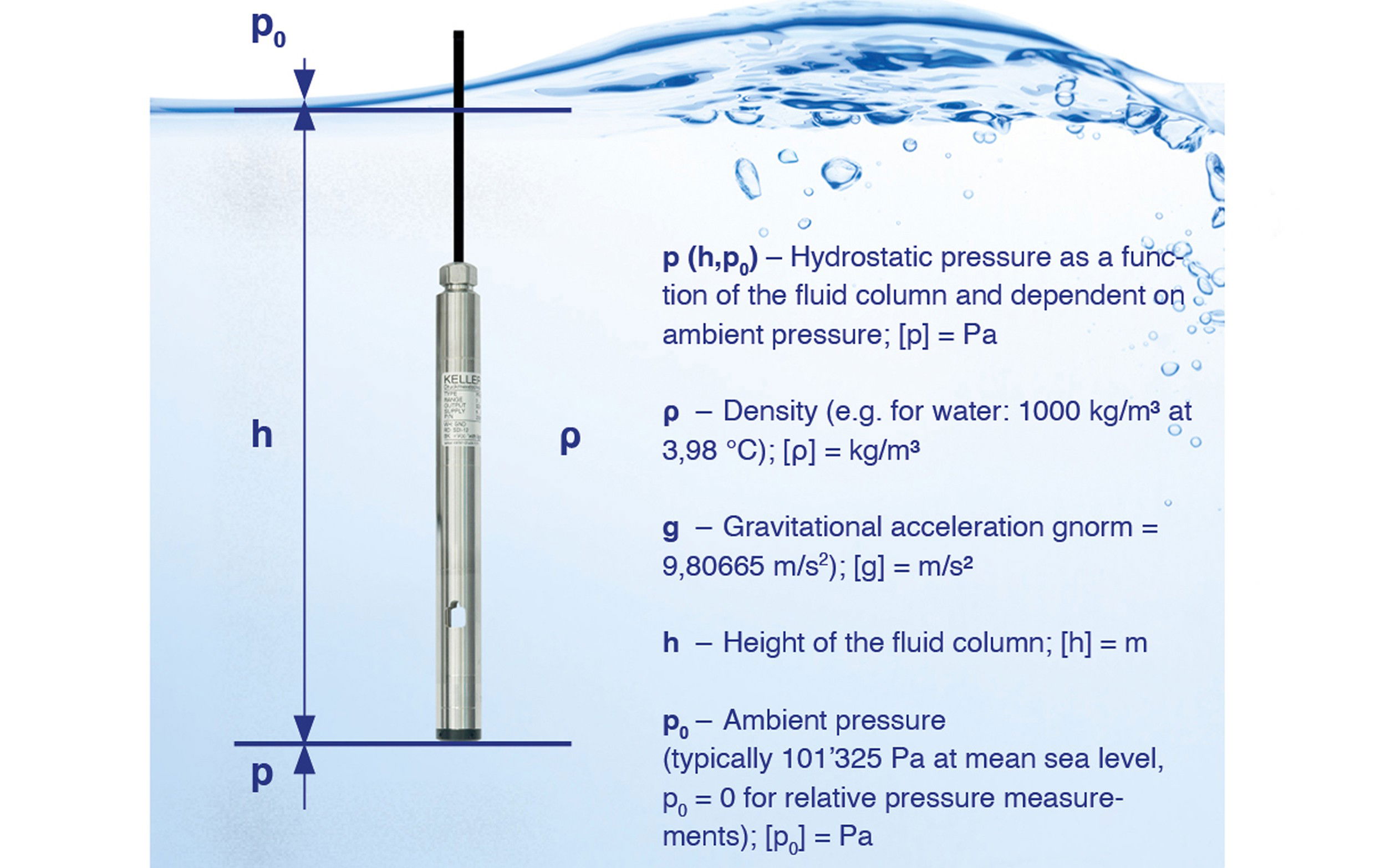Hydrostatic Measurements
13. April 2021

Fill level measurement
These days, monitoring the fill level is a key factor for many applications and industries and even for our basic requirements.
For example, most of our drinking water comes from groundwater. No longer confined to the Global South, general water scarcity is now an ever-present issue in technologically developed countries as well. Climate change, forest fires, glacier melting and the resulting rise in world sea levels are all arguments in favour of the proper, well-thought-through management of groundwater resources.
Furthermore, monitoring the fill level in tanks or sealed containers of oil or similar liquids is very important, especially on cost grounds, and can also double as theft protection. Determining the exact fill level right down to centimetre can therefore save the customer a fair bit. Using an additional radio module, a purchase order can be triggered automatically in various applications as soon as the fill level falls below a certain threshold.
The most common form of electronic fill level measurement is hydrostatic pressure measurement.
Hydrostatic pressure
Hydrostatic pressure is the pressure that forms within a liquid or gas at rest due to the influence of the force of gravity. The fluid at rest exerts a dead weight on the layers below as a result of its own mass. Neither the type of medium nor whether or not the fluid is in motion plays a role here. Dynamic pressure due to flow is not recorded.
Hydrostatic pressure can be measured in either an open, i.e. freely accessible, container or body of water as well as in a sealed tank with positive or negative pressure. In all cases, the actual fill level is determined in consideration of the ambient pressure. The pressure of the gas trapped above the liquid must also be factored in if the container is sealed. This is done by taking another pressure measurement on a second transmitter, which is usually screwed into the side of the tank.
Hydrostatic pressure factoring in ambient pressure
The following formula can be used to calculate the hydrostatic pressure while factoring in ambient pressure:
p(h, p0) = ρ * g * h + p0
The formula can be applied to open bodies of water and fluids at rest (static) in containers. A differential pressure measurement to factor in p0 (lid pressure) is used for sealed containers. To factor ambient pressure into open scenarios, measurements are taken using relative pressure probes or AA (absolute-absolute) technology.
Remote transmission via the Internet
When monitoring groundwater/fill levels in open bodies of water or outdoors, the measuring points may be relatively far away and difficult to reach. For these applications, KELLER Pressure has solutions involving level loggers via short-range radio interfaces as well as level loggers with a remote data transmission unit via GSM or the Internet.
PressureSuite Cloud
PressureSuite Cloud / Desktop is used to process and analyse / prepare the collected data.
Product overview for hydrostatic measurements
• Level Probes for a wide range of requirements / interfaces, Intrinsically Safe Level Probes
• Data Loggers / Level Loggers



